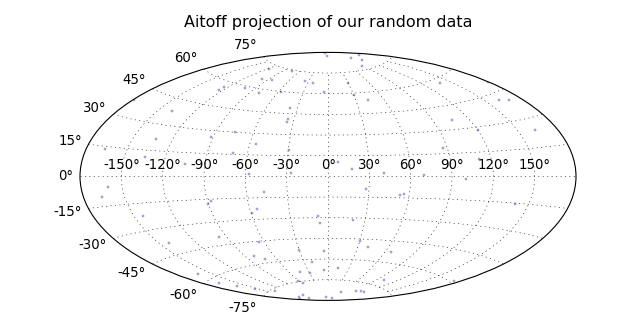wiesiek.euAstropy coordinatesgeek speed dating ukgeek uk datinggeeky dating sites ukgeeky sex toys ukgeneral chat forums ukgenital herpes dating sites ukgenital herpes dating ukgenuine adult dating sites ukgenuine dating sites ukgenuine free dating sites uk |
wiesiek.eu
microphone is muted by system settings
hillsboro tx newspaper
pintle hitch receiver harbor freight
cleric dark souls 3
augusta ga to covington ga
Astropy Coordinates: A Powerful Tool for Astronomical Data Analysis Astropy is a widely used open-source Python library designed for astrophysics and astronomy. It provides a comprehensive set of tools and functionalities to analyze and manipulate astronomical data. One of the key features of Astropy is its coordinates module, which offers a powerful and flexible framework for working with celestial coordinates. Astropy coordinates allow astronomers to convert between different coordinate systems, perform coordinate transformations, and calculate various properties of celestial objects. It provides support for a wide range of coordinate systems, including equatorial, galactic, ecliptic, and horizontal. This flexibility makes it an invaluable tool for astronomers working with data from different telescopes and observatories. One of the main advantages of Astropy coordinates is its integration with other Astropy modules, such as the units module. This integration allows for seamless unit conversions and calculations, making it easier to work with physical quantities associated with celestial objects. For example, you can convert a celestial coordinate from degrees to radians or from arcseconds to light-years with just a few lines of code. Astropy coordinates also provide a convenient way to calculate angular distances and positions on the celestial sphere. This is particularly useful when analyzing astronomical images or performing astrometry tasks. With Astropy coordinates, you can easily determine the separation between two objects, the position angle of an object with respect to another, or the great circle distance between two points on the sky. In addition to basic coordinate transformations, Astropy coordinates offer advanced functionalities for handling time-dependent coordinates. This is crucial when dealing with objects that have proper motions or when studying the dynamics of celestial bodies. The coordinates module provides support for proper motion corrections, precession, and nutation calculations, allowing users to accurately track the motion of celestial objects over time. Astropy coordinates also include built-in support for coordinate frames and reference systems. This allows astronomers to define custom coordinate frames and tie them to specific reference systems, such as the International Celestial Reference System (ICRS) or the FK5 system. By using these coordinate frames, astronomers can easily work with data that is aligned with a specific reference system, ensuring accurate and consistent analysis. Another important feature of Astropy coordinates is its integration with popular astronomical data formats, such as FITS (Flexible Image Transport System) and VO (Virtual Observatory) tables. This enables seamless interoperability between Astropy and other astronomical software packages, making it easier to share and exchange data between different tools and platforms. Astropy coordinates are extensively documented, providing detailed explanations and examples to help users get started quickly. The official Astropy documentation includes a dedicated section on coordinates, covering everything from basic usage to advanced techniques. Additionally, the Astropy community is very active and supportive, providing forums and mailing lists where users can ask questions and seek assistance. In conclusion, Astropy coordinates offer a comprehensive and flexible framework for working with celestial coordinates in Python. With its extensive functionalities, seamless integration with other Astropy modules, and support for various coordinate systems and reference frames, Astropy coordinates are an indispensable tool for astronomers and astrophysicists. Whether you are analyzing astronomical images, studying the motion of celestial objects, or working with astronomical data, Astropy coordinates provide the tools you need to perform precise and accurate calculations. Astronomical Coordinate Systems (astropy.coordinates) — Astropy v5.3.1. The coordinates package provides classes for representing a variety of celestial/spatial coordinates and their velocity components, as well as tools for converting between common coordinate systems in a uniform waygeek speed dating uk. Getting Started ¶ The best way to start using coordinates is to use the SkyCoord class.. Using and Designing Coordinate Representations — Astropy v5.3.1. Using and Designing Coordinate Representationsgeek uk dating. ¶. Points in a 3D vector space can be represented in different ways, such as Cartesian, spherical polar, cylindrical, and so on astropy coordinates. These underlie the way coordinate data in astropy.coordinates is represented, as described in the Overview of astropy.coordinates Concepts.. Latitude — Astropy v5.4.dev0+g2739197e6.d20230602. class astropy.coordinatesgeeky dating sites uk. Latitude (angle, unit = None, ** kwargs) [source] ¶ Bases: Angle astropy coordinates. Latitude-like angle(s) which must be in the range -90 to +90 deggeeky sex toys uk. A Latitude object is distinguished from a pure Angle by virtue of being constrained so that:-. Astronomical Coordinates 1: Getting Started with astropy.coordinates. In Astropy, the most common way of representing and working with sky coordinates is to use the SkyCoord object ( docs ) astropy coordinates. A SkyCoord can be created directly from angles or arrays of angles with associated units, as demonstrated below.general chat forums uk. The coordinates package provides classes for representing a variety of celestial/spatial coordinates, as well as tools for converting between common coordinate systems in a uniform waygenital herpes dating sites uk
genital herpes dating uk. Coordinates (sunpy.coordinates) — SunPy 5.0.0 documentation. This sub-package contains: A robust framework for working with solar-physics coordinate systems
genuine adult dating sites uk
genuine dating sites uk. .circleci .devcontainer .github .pyinstaller astropy cextern docs examples licenses .astropy-root .git-blame-ignore-revs .gitattributes .gitignore .mailmap .pre-commit-config.yaml astropy coordinates. Celestial Coordinates — Python4Astronomers 2.0 documentation. Astropy includes a framework to represent celestial coordinates and transform between them astropy coordinates. Astropy most of the common coordinate systems (ICRS, FK4, FK5, and Galactic, AltAz) and users can define their own systems if needed. Transformation of both individual scalar coordinates and arrays of coordinates is supported.genuine free dating sites uk. |


